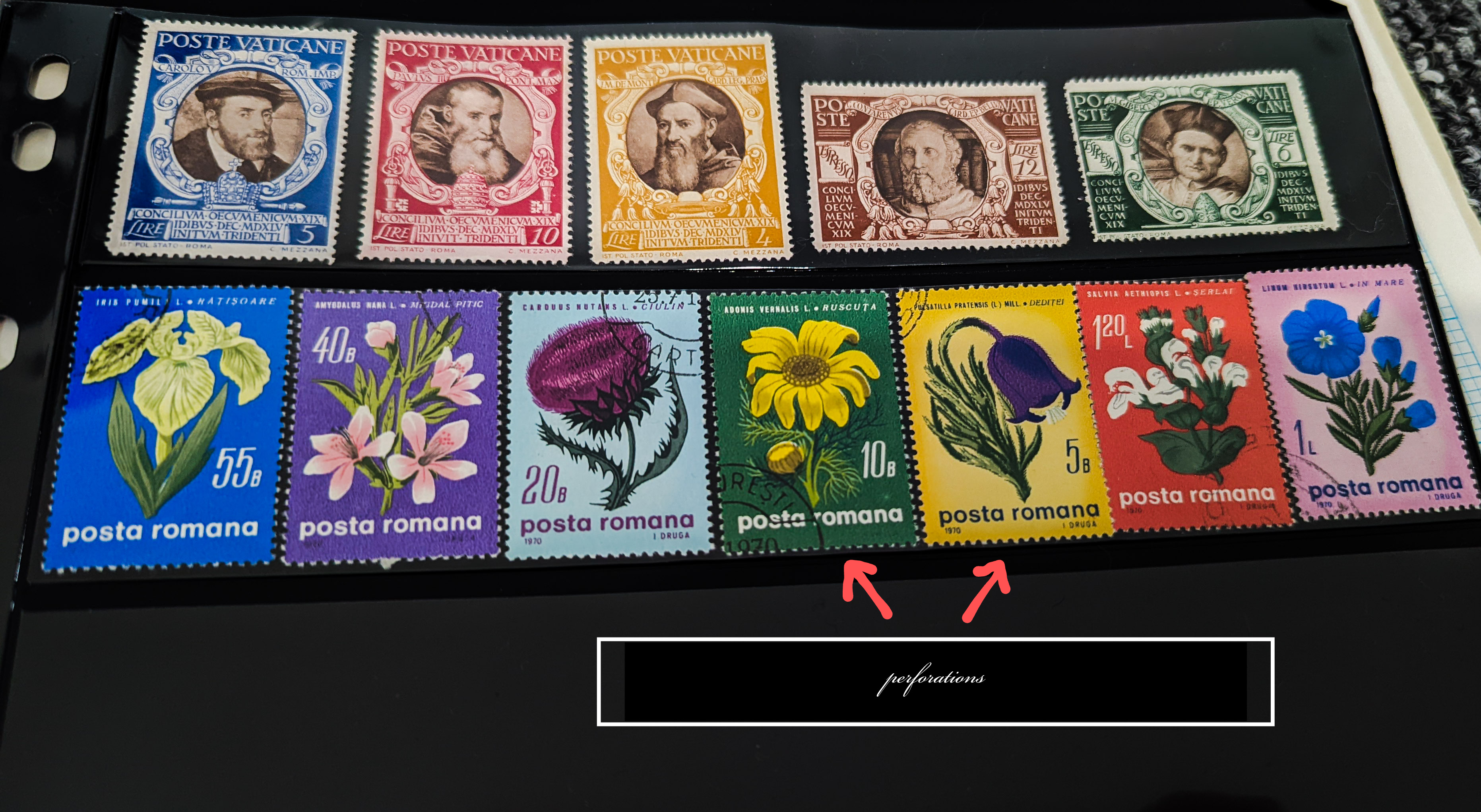Understanding Stamp Perforation
Stamp perforation refers to the tiny holes punched through stamps, making them easier to detach from paper sheets. These perforations also prevent stamps from becoming creased. They’re typically measured in points, with 72 points being the standard size, often referred to as “perfs” in collector circles.
A Glimpse into the History of Stamp Perforation
Stamp perforation has an intriguing history. Initially, stamps were manually perforated, a painstakingly slow process. In the 1840s, when the first stamps emerged, they were not perforated, requiring people to use scissors for separation.
However, in the late 1840s, a British engineer, Henry Archer, invented the first stamp perforator, revolutionizing the process. By 1857, almost all postage stamp issues globally were being perforated.
Stamp Perforation Types
Stamp perforations vary widely. The most common is the single-row perforation, featuring equally spaced holes across the stamp. This style also exists in double and triple row variations.
Other types include knife-edge or gauge perforations, which create a sharp division between the stamp and the paper. Another style mimics scissor edges, giving stamps a rougher appearance.
A distinctive variant involves wavy line perforations, separating stamps from paper using a series of undulating lines. Perforation gauges, either ‘line’ or ‘spot’ types, help measure the perforation number of a stamp.
Stamps, being small and delicate, benefit greatly from perforations. Mistakes in cutting stamps manually were common before the advent of perforating equipment. Variations in perforation, like “compound perforation,” where top and bottom “perfs” differ from the sides, contribute to stamp rarity and value.
Determining Perforation and Its Importance
Understanding a stamp’s perforation can be crucial in identifying rare items in your collection. Mis-perforated stamp sheets are highly sought after by collectors due to their rarity. Determining the perforation gauge accurately aids in distinguishing similar-looking stamps with different perforations.
Acquiring a Perforation Gauge
Perforation gauges for stamps are readily available from various online retailers like Amazon or eBay. These tools, like the Instanta perforation guide, count perforations within a 2-centimeter measurement. They’re easily accessible from philatelic stores, both online and on the high street.
If you seek guidance on measuring perforation gauges, websites like Mystic Stamp offer helpful resources.
A printable perforation gauge has its pros and cons when compared to purchasing an official product. For example, you may not have the right hardware to use a printable perforation guide, if you have no printer, this is useless! You may also find that the quality of your printable perforation guide to be diminished depending on how it is printed. I find the printable perforation gauges from stampsmarter.org to be a great addition to my collection.
